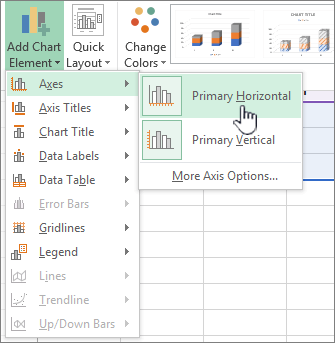

Sometimes, in a combination chart, the values of one data set vary widely from another, so it is difficult for us to compare the data from the chart. Note: With repeating above steps, you can combine more than two chat types, you just need to select the additional data sets and choose a different chart for each data series.Īdd a secondary axis for the combination charts Then click OK button, and now you have a chart with two chart types as following screenshot shows: In the Change Chart Type dialog, select one line chart type as you need, see screenshot:ĥ.
#ADD SECOND AXIS EXCEL FOR MAC SERIES#
Please click red bar Total Price data column in the chart, and right click, then choose Change Series Chart Type from the context menu, see screenshot:Ĥ. In this step, we need to change one of the data sets to a line chart. Now we have a column chart with two data sets (Area and Total Price), both charted using the same chart type.

Then select the Total Price data range, press Ctrl + C to copy it and then click any column in the above column chart, press Ctrl + V to paste the data into the chart. First, we can create a column chart for the first Area data source, please select the data range and then specify a column type chart under Insert tab, and then a column chart will be created as following screenshots shown:Ģ. Supposing you have the following two data sources, you can create combination charts based on the data source with these steps:ġ.
#ADD SECOND AXIS EXCEL FOR MAC PDF#
Split Tools: Split Data into Multiple Sheets Based on Value One Workbook to Multiple Excel, PDF or CSV Files One Column to Multiple Columns.Merge Tools: Multiple Workbooks and Sheets into One Merge Multiple Cells/Rows/Columns Without Losing Data Merge Duplicate Rows and Sum.



 0 kommentar(er)
0 kommentar(er)
